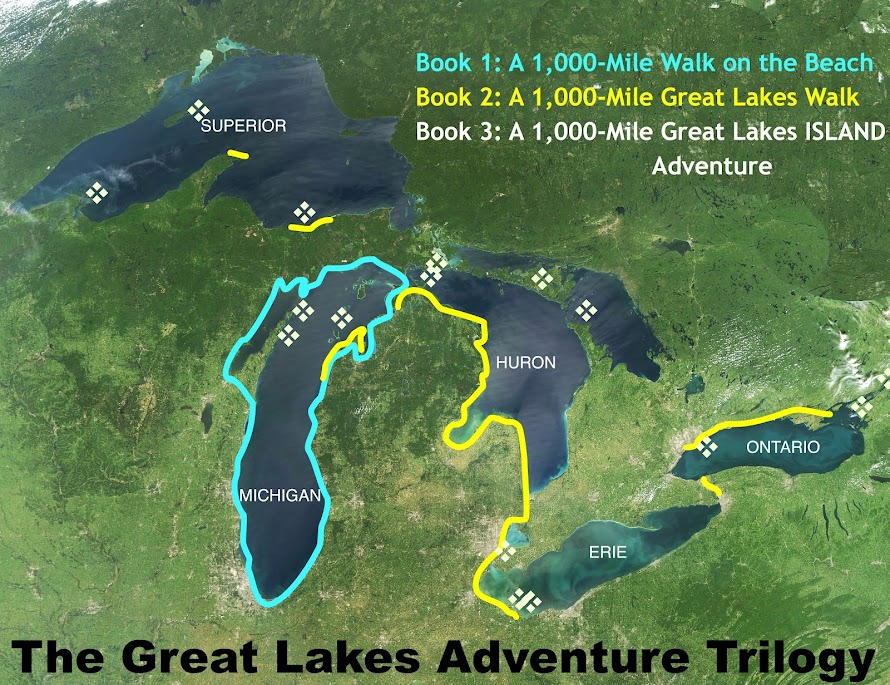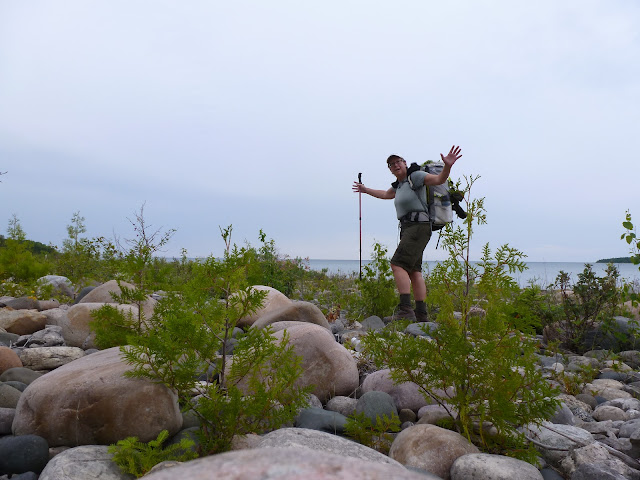While on my book tour, I've met many people who marvel
at the idea of hiking 1000 miles.
Sometimes, they ask me if it was difficult and a chuckle usually escapes from me before I can suppress it.
You see, I'm not one of those ultra-marathoners or lifelong hikers or crazy people who have to cover 20 miles a day to feel alive.
I feel quite alive reading a book or sitting in my
office all day writing.
So, yes, it was difficult. Some days were downright painful. But the lakes call to me and I am happiest when walking near them.
Here's a little video shot on one of the more difficult days --
windy, cold, walking on the side of a road,
18 miles down and 2 miles to go.
And it shows how I motivated myself to hike the last 2 miles of a 20-mile day.
Yes, it was difficult.
And, YES, it was worth every step.






















































